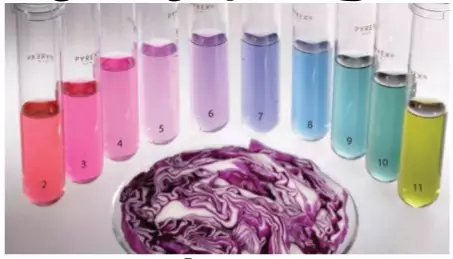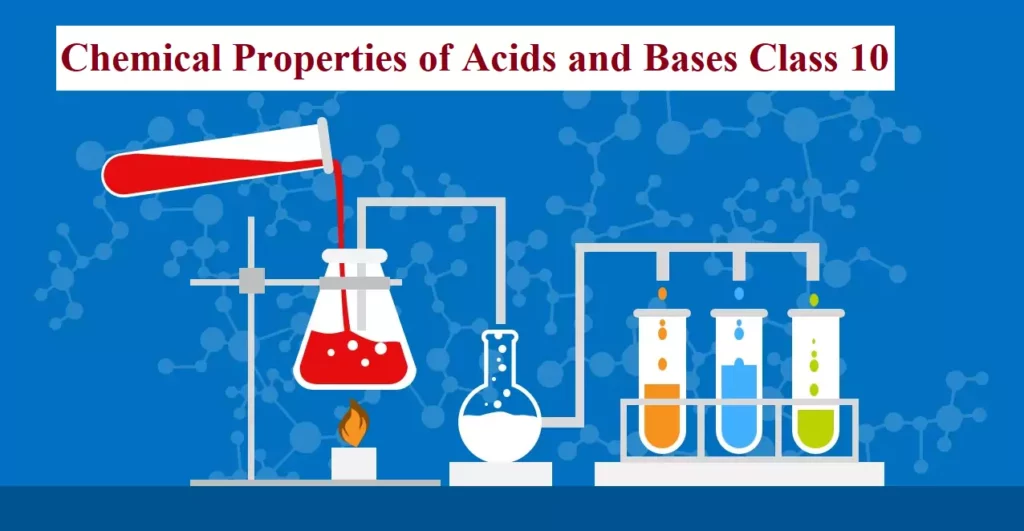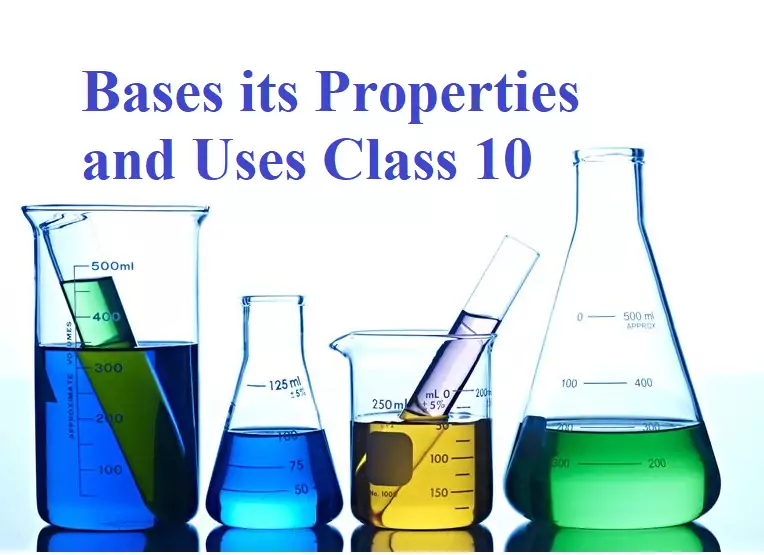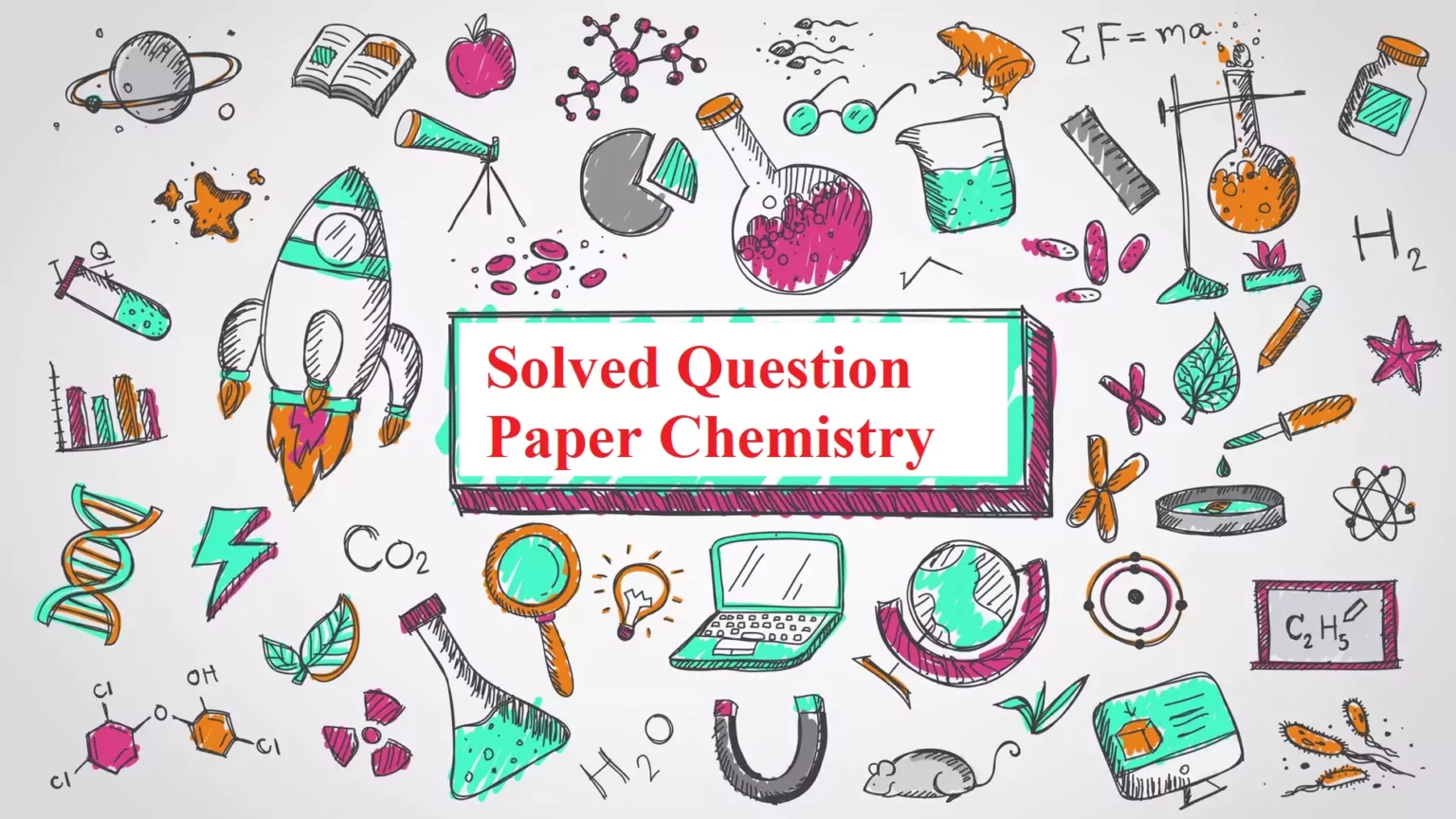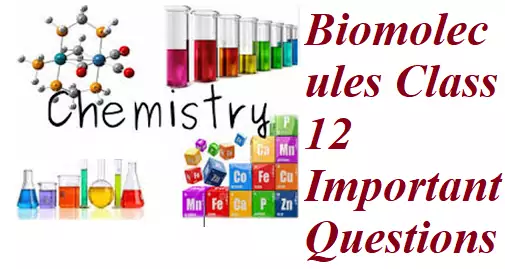Acid-Base Indicators and pH (1) STRENGTH OF ACID OR BASE SOLUTIONS: A scale for measuring hydrogen ion concentration in a solution, called pH scale has been developed. The p in pH stands for ‘potenz’ in German, meaning power. p = potential or Power H = Hydrogen (i) pH of a solution: pH of a solution is the negative logarithm to the base 10 of the hydrogen ion concentration expressed in mole per litre. pH = –log10 (H+). pH = 7 Neutral Solution H3O+ = OH – pH > 7 Basic Solution H3O+ < OH – pH< 7 Acidic Solution H3O+ > OH – The range of pH is from 1 to 14 (ii)…
Author: Dr. Vikas Jasrotia
Chemical Properties of Acids and Bases Class 10 ACIDS: Acid is a substance that furnishes H+ ions or H3O+ ions when dissolved in water. Acids have one or more replaceable hydrogen atoms. The word acid is derived from the Latin name ‘Acidus’ which means Sour Taste. Substances with a ‘sour taste’ are acids. Lemon juice, vinegar and grape juice have a sour taste, so they are acidic. Substances that turn blue litmus solution red are called acids. CLASSIFICATION OF ACIDS: (i) Based on Source: Acids are of two types Mineral acids (Inorganic acid), Organic acid. (a) Acids that are obtained from minerals and rocks are called Mineral acids. For e.g.,…
Bases its Properties and Uses Class 10 BASES: Substances that change red litmus solution blue are called bases. They are bitter in taste. They release hydroxide ions (OH-) when dissolved in water. They have a soapy touch (e.g. Washing soda, caustic soda, and caustic potash). CLASSIFICATION OF BASES: 1. Based on Ionisation: (a) Strong Bases: These are bases that ionise completely in an aqueous solution eg. NaOH, KOH. (b) Weak Bases: These are bases that ionise partially in an aqueous solution eg. NH4OH, Ca(OH)2. 2. Based on their Acidity: (a) Monoacidic Base: It is a base that ionises in water to give one hydroxide ion per molecule eg. NaOH, KOH.…
Acids Its Important Properties and Uses ACIDS: Acid is a substance which furnishes H+ ions or H3O+ ions when dissolved in water. Acids have one or more replaceable hydrogen atoms. The word acid is derived from the Latin name ‘Acidus’ which means Sour Taste. Substances with a ‘sour taste’ are acids. Lemon juice, vinegar and grape juice have a sour taste, so they are acidic. Substances which turn blue litmus solution red are called acids. CLASSIFICATION OF ACIDS: 1. Based on Source: Acids are of two types Mineral acids (Inorganic acid), Organic acids. (a) Acids which are obtained from minerals and rocks are called Mineral acids. For e.g., H2SO4 (Sulphuric acid), HNO3 (Nitric acid)…
Solved Question Paper Chemistry Class – XII CHEMISTRY THEORY (043) Time: 3 Hours M. M.: 70 General Instructions: Read the following instructions carefully. There are 33 questions in this question paper. All questions are Section A: No. 1 to 16 are objective type questions. Q. No. 1 and 2 are passage-based questions carrying 4 marks each while Q. No. 3…
Important Solved Questions of Chapter Solutions Que 1. Henry’s Law constant for the solubility of N2 gas in water at 298 K is 1.0 × 105 atm. The mole fraction of N2 in the air is 0.8. Find the number of moles of N2 from air dissolved in 10 moles of eater at 298 K and 5 atm pressure. Ans 1. Que 2. At a certain temperature, the vapour pressure of pure ether is 646 mm and that of pure acetone is 283 mm. Calculate the mole fraction of each component in the vapour state if the mole fraction of…
Chapter Solutions Important Points Knowledge Points 1. Solutions are the homogeneous mixtures of two or more than two components. 2. Binary Solution: A solution having two components is called a binary solution. Components of a binary solution are solute and solvent. 3. When the solvent is in solid-state, the solution is called a solid solution. 4. When the solvent is in liquid state, solution is called liquid solution. 5. When the solvent is in gaseous state, solution is called gaseous solution. 6. Concentration is the amount of solute in given amount of solution. 7. Mass by volume percentage (w/v): Mass of…
Biomolecules Class 12 Important Questions Que1. How many asymmetric carbon atoms are present in D (+) glucose? Ans 1. Four asymmetric carbon atoms are present in D (+) glucose. Que 2. What are the two end products of cellular respiration? Ans 2. These are CO2 and H2O. Que 3. Give the significance of (+)-sign in the name D- (+)-glucose. Ans 3. (+) sign indicates the dextrorotatory nature of glucose. Que 4. Give the significance of the prefix ‘D’ in the name D- (+)-glucose. Ans 4. ‘D’ Signifies that –OH group on C-5 is on the right-hand side. Que…
Solved Important MCQs of Biomolecules 1. Biomolecules are (a) Aldehydes and Ketones (b) Acids and Esters (c) Carbohydrates, Proteins, and Fats (d) Alcohols and Phenols Ans 1. (c) Carbohydrates, proteins, and fats are biomolecules. 2. Which of the following is a disaccharide? (a) Lactose (b) Starch (c) Cellulose (d) Fructose Ans 2. (a) Lactose is a disaccharide. 3. The sugar that is characteristic of milk is (a) Maltose (b) Ribose (c) Lactose (d) Galactose Ans 3. (c) It is found in the milk of all animals and imparts sweetness to…
Haloalkanes and Haloarenes Notes Introduction: The replacement of hydrogen atom(s) in a hydrocarbon, aliphatic or aromatic, by halogen atom(s), results in the formation of alkyl halide (haloalkane) and aryl halide (haloarene), respectively. These are compounds containing halogen atoms attached to an alkyl or aryl group. The general representation of haloalkanes is R-X and that of haloarenes is Ar-X [where X = F, Cl, Br, I]. These classes of compounds find wide applications in industry as well as in day-to-day life. They are used as solvents for relatively non-polar compounds and as starting materials for the synthesis of a wide range of organic compounds. Classification: Haloalkanes and haloarenes…
